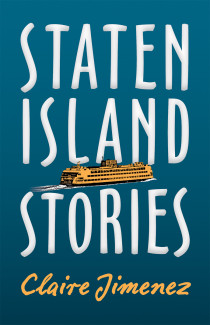
Johns Hopkins UniversityEst. 1876
America’s First Research University
Staten Island Stories

The only book about Staten Island I can remember reading as a child was Paul Zindel’s The Pigman which probably most Staten Islanders have been assigned to read at one point in middle school. I liked The Pigman, the working-class characteristics of Lorraine’s life at home, the way her mother smacked her silly right in front of the cops when the police showed up at their door. I, too, grew up perpetually in trouble for talking back. But not one of these characters looked like me or my family, and Zindel wrote that book in 1968, almost twenty years before I was born. Surely there must have been more authors writing about Staten Island since then?
As it turns out, there were. But for some strange reason, we rarely hear about those authors’ origins on the island. Take for example, Sigrid Nunez, who recently won the National Book Award in 2018 for her beautiful novel The Friend. She grew up in a housing project in Staten Island and graduated from the old New Dorp Highschool in 1968. (In 1988, the old New Dorp HS building was turned into Staten Island Tech, which I attended in the nineties.) Nunez’s first book, the semi-autobiographical novel A Feather on the Breath of God, is about a young girl growing up on Staten Island, with her Chinese-Panamanian father and German mother. More recently, I have started reading Nunez’s For Rouenna, in which the island features prominently, as well. And she’s got me hooked with the rhythms of her sentences; Nunez is writing poetry and fooling us all into thinking it is prose.
Many people also don’t know that Audre Lorde, one of the greatest poets of the United States, wrote The Black Unicorn while living in Stapleton in the seventies. Stapleton’s and St. George’s waterfronts repeatedly make an appearance in this book. In one poem “Scar,” Lorde writes: “This is a simple poem./ For the mothers sisters daughters/ girls I have never been/ for the women who clean the Staten Island Ferry/ for the sleek witches who burn me at midnight/ in effigy/ because I eat at their tables/ and sleep with their ghosts.” And in “From Inside an Empty Purse,” Lorde describes “treacherous growing water/ in a blind tongueless pond.” In real life, too, the water is a physical boundary that separates Staten Island from the rest of the city. Politically, over the last few decades, many white conservative islanders have sought to preserve that boundary fearing that if it were easier to reach the Island, more black and brown folks would move there. And yet, it feels like much of Lorde’s poetry is trying to inhabit that border with the voices of black and brown women.

I also would be remiss if I didn’t mention the Wu-Tang Clan, whose lyrics created an entire mythology around Shaolin. While writing my own short story collection, Staten Island Stories, exploring the intersection of race and class on the island, I couldn’t help coming back to the chorus in “C.R.E.A.M.” “Cash rules everything around me.” The Wu-Tang Clan is not only an iconic hip hop group; they were storytellers too, documenting life in Stapleton and Park Hill in the early nineties and the larger troubled politics of the surrounding island.
Yet, oddly, it seems that popular media only concerns themselves with Staten Island to mock it. I have to say that some of this is deserved. There are plenty of racists on the Island who have earned that type of ridicule. For a moment the New Yorker seemed strangely obsessed with Scott LoBaido. I’m not exactly sure why. Not only is his art mediocre, it’s also racist. Why give an artist like that any attention? But I suspect it’s fun to mock somebody like LoBaido, his weird antics and grabs at relevancy, such as the time he dressed up as a Christmas tree to protest the lack of holiday decorations in the ferry terminal. Fair enough. But I would argue that there are plenty of racists in Manhattan, too. They may not have voted for Trump, but they’ll be damned if you try to diversify their schools. My point here is that there is not only one type of Staten Islander, and as Chimamanda Ngozi Adichie warns us, we must be careful with “the danger of a single story,” the way somebody like LoBaido can obscure the attention we give to someone like Sigrid Nunez or Audre Lorde.
Two weeks ago, I had the opportunity to come back to Staten Island for a poetry reading. I was invited by Thomas Fucaloro, one of the hardest working poets on the island. In his poems, Fucaloro often explores addiction, depression and the forgotten borough’s absurd and ugly beauty. In one Facebook post turned poetry from 2015, he quips: “If you want to see the real life version of The Walking Dead, go to the (Staten Island) Mall.” That night, Fucaloro read a poem critiquing the city for thinking of constructing a barrier on the Verrazano bridge to prevent people from jumping off of it, instead of investing in mental health. Sitting there, waiting my turn to come up to the mic, I was struck by how diverse the room was. In front of me sat the Peruvian poet Rocio Uchofen, who was a linguist in Lima before she landed in the United States. One minute she was reading poems about protest, the next her father’s death. The last feature was MA Dennis, a hilarious but also heartbreaking performance poet, who in one particularly memorable moment of the night spoke about how as a perfectionist writer he’s managed to avoid killing himself because he can’t quite seem to revise the suicide letter yet, to his liking. Such is the odd and brutal brand of humor you find on Staten Island. And yet there is also warmth. The host for this reading Ellen Dotts drew each poet in, connecting their work to the previous one, in effect further reinforcing this small community of writers.
That night on the ferry traveling back to the city, I could not help but wonder why these were not the faces or stories we heard about when people talked about Staten Island? This small group of poets was just a snapshot. I could tell you about the poetry of Kofi Antwi, a writer of Ghanian descent who grew up in Mariners Harbor or SI poet laureate Marguerite Maria Rivas who would teach poetry workshops in the early 2000s in a small back room at the New Dorp Library. I’ve also just recently picked up a collection of poetry entitled Bicycle in a Ransacked City: An Elegy, by Puerto Rican poet Andrés Cerpa, which opens with the words, “If anything, I’m a petty thief in the world of forgetting, a blade in an elm,/ a bottled note in the sea of Victory Boulevard at dusk.” There is so much lost when we don’t recognize those voices.
I encourage you, dear reader, to listen to them.
To learn more about Staten Island literature, check out the radio show Cut + Paste
Order Staten Island Stories – published on December 3, 2019 – at the following link: https://jhupbooks.press.jhu.edu/title/staten-island-stories
Claire Jimenez, a longtime Staten Islander, is a PhD student in English with a concentration in ethnic studies at the University of Nebraska–Lincoln. She received her BA in English from Colby College and her MFA in creative writing from Vanderbilt University. Her fiction, essays, and reviews have appeared in BOAAT, New Madrid, Afro-Hispanic Review, Pank, el roommate, The Toast, and The Los Angeles Review of Books, among other publications. Jimenez is the author of Staten Island Stories.

